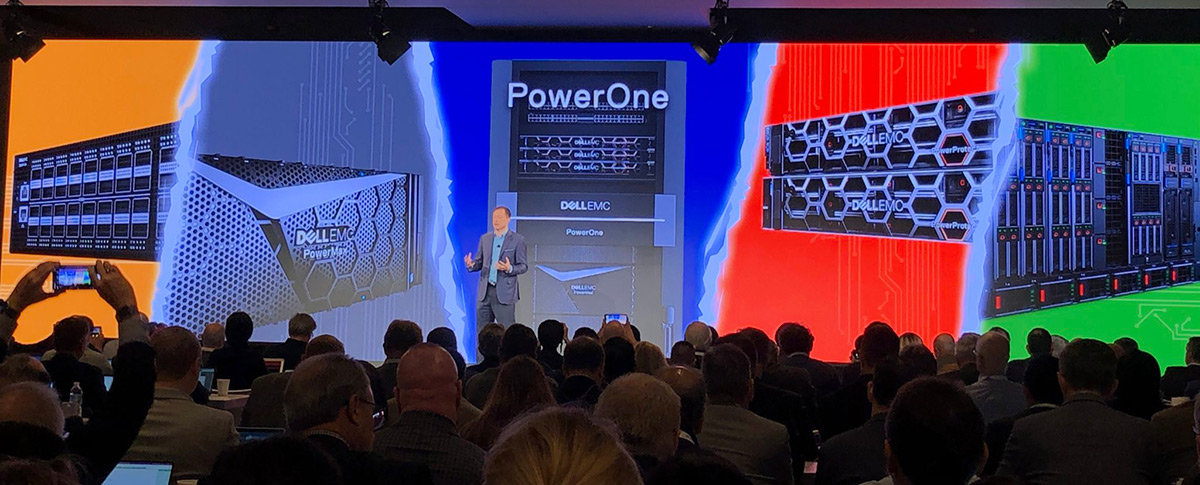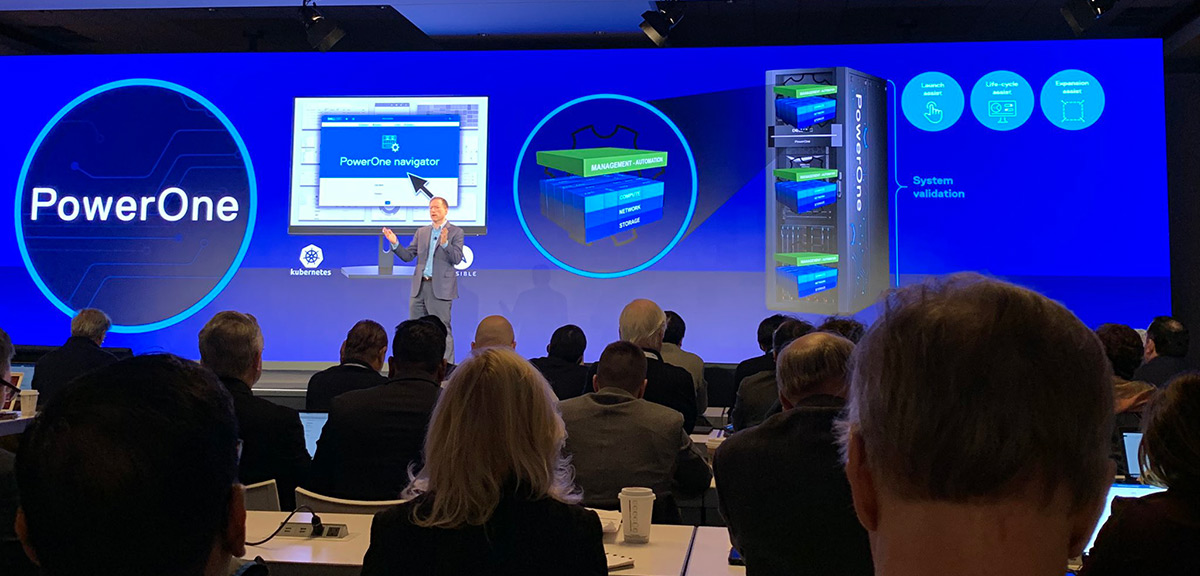
Dell Technologies announces Dell EMC PowerOne autonomous infrastructure to make deploying, managing and consuming IT easier for organizations. PowerOne integrates PowerEdge compute, PowerMax storage, PowerSwitch networking and VMware virtualization into a single system combined with a built-in intelligence engine to automate thousands of manual steps over its lifecycle. 1
“PowerOne autonomous infrastructure automates IT so customers can focus less on managing technology and more on benefiting from it,” said Jeff Boudreau, president, Dell Technologies Infrastructure Solutions Group. “As we look to the future, PowerOne offers a tremendous leap forward. It helps customers focus on unleashing the power of data, allowing IT teams to innovate and achieve business goals faster.”
PowerOne autonomous infrastructure empowers users to focus on outcomes
At the heart of PowerOne’s autonomous operations is a built-in, advanced automation engine. PowerOne empowers users to focus on their business, whether that means deploying workloads, applications, or developing new products and services. Much like lane assist, navigation and other features in autonomous vehicles, the vehicle does most operations on its own while the passenger must let the car know the desired destination. PowerOne’s advanced automation allows administrators to state a desired business outcome – and the system calculates the best way to do the rest.
The automation engine takes advantage of a Kubernetes microservices architecture and uses Ansible workflows to assist users by automating the component configuration and provisioning, delivering a customer-managed datacenter-as-a-service.
PowerOne provides a single system-level application programming interface (API), giving users the control to create business objective-specific pools of resources. This API can be tied into existing tools, such as service portals, to deliver programmable versus manual IT operations. This is known as Infrastructure as Code – virtually eliminating the need to log in to individual component management systems. With PowerOne, organizations can create workload-ready VMware clusters in only a few clicks2.

Examples of PowerOne autonomous benefits include:
- Launch Assist speeds installation and configuration using built-in workflows based on VMware Validated Designs and Dell EMC best practices. PowerOne helps save time by automating the installation and configuration of hardware and VMware clusters.
- Lifecycle Assist helps reduce infrastructure risk by simplifying daily operations and life cycle management with automated modular system updates and validation, continually checking the correct hardware and firmware settings.
- Expansion Assist matches infrastructure with business needs by adding, removing or reassigning capacity and resources through automated provisioning and scaling features. Customers can more easily align operations with business requirements.
All-in-One System delivers the power of Dell Technologies
PowerOne is designed to deliver the services, security and resiliency required by mission critical and emerging artificial intelligence (AI) and machine learning (ML) applications while providing easy integration into cloud management toolsets, such as VMware vRealize.
To help organizations realize production benefits even more quickly, Dell Technologies Services offers ProConsult advisory and migration services, ProDeploy onsite experts to accelerate adoption, and ProSupport Plus for ongoing support with a single point of contact. 4

Dell EMC PowerOne flexible consumption offers on-premises infrastructure, on-demand
Modern workloads need the ability to scale on-demand to meet changing business requirements. PowerOne is available through today’s newly announced Dell Technologies on Demand, empowering customers and channel partners to do business in ways that make sense for them. Dell Technologies on Demand delivers hybrid cloud agility with the control and performance of on-premises infrastructure. Customers only pay for what they use when they use it – just like a service. This makes it easier for organizations to plan, budget, deploy and manage the entire IT lifecycle.
With Dell Technologies on Demand, businesses can choose between several flexible pay-per-use options, along with global support, deployment, and managed services, all designed to simplify and reduce the management of on-premises IT. This gives customers the freedom to shift IT infrastructure spending from one-time capital expenses to ongoing operational expenses in a predictable and sensible way.
Dell EMC PowerOne will be globally available November 22, 2019.
1 Based on internal Dell EMC testing, Sept 2019. Analysis of manual steps replaced by PowerOne automation on a 16 node 4 chassis system over 5 years. Actual results will vary.
2 Based on internal Dell EMC testing, Sept 2019. Analysis of manual steps replaced by PowerOne when automating VMware cluster creation on a 16 node 4 chassis system. Actual results will vary.
3 Based on Dell EMC internal analysis of max bandwidth (64K blocks) of the PowerMax 8000 (350GS/s) versus max bandwidth of competitive mainstream arrays, July 2019. Actual performance will vary.
4Availability and terms of Dell EMC Services vary by region and by product. For more information, contact your Dell EMC sales representative.
